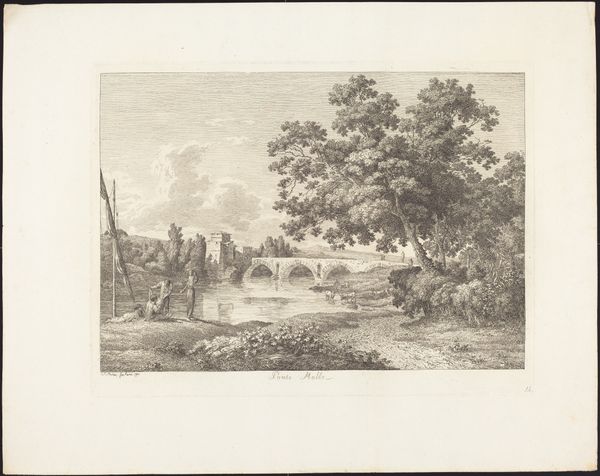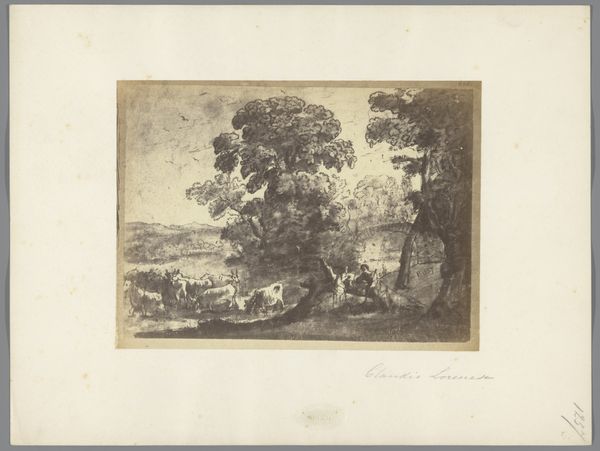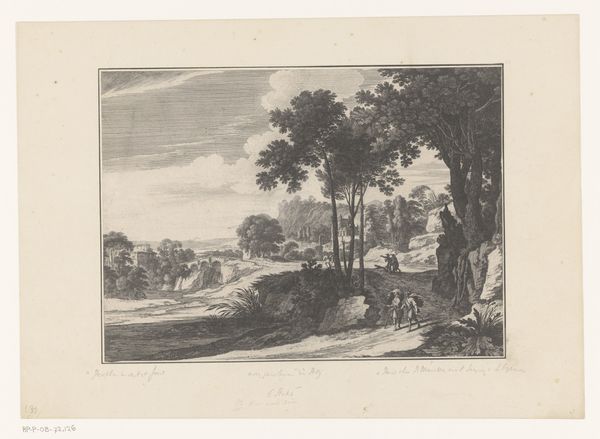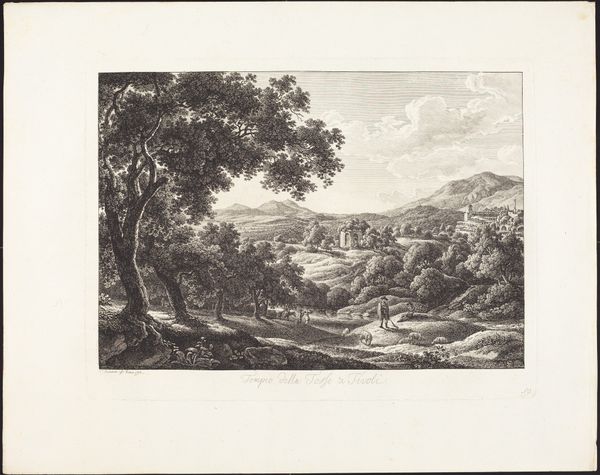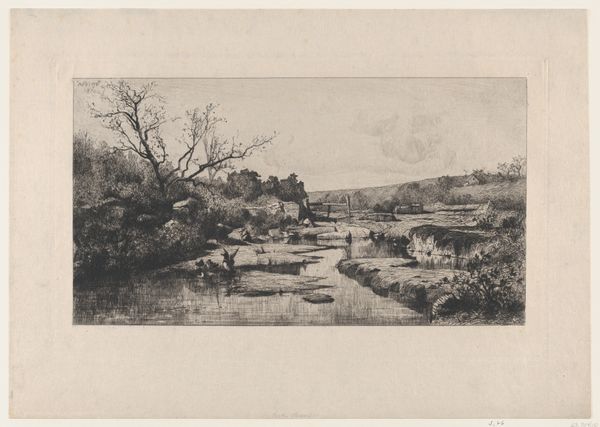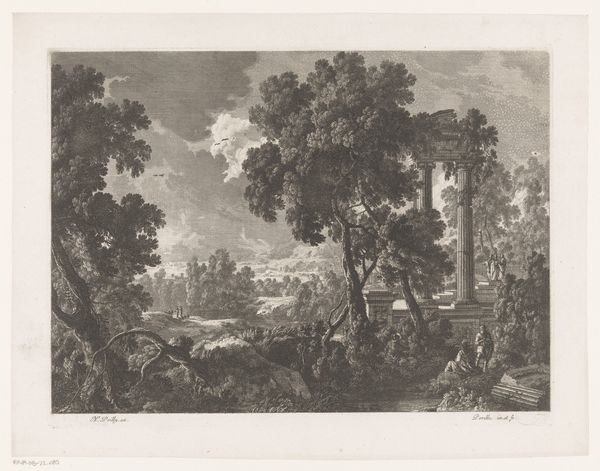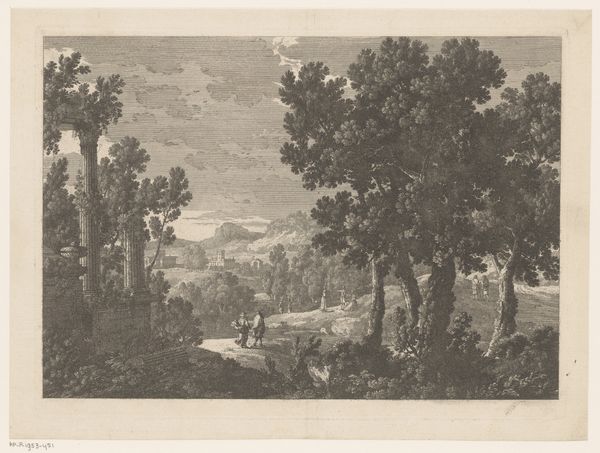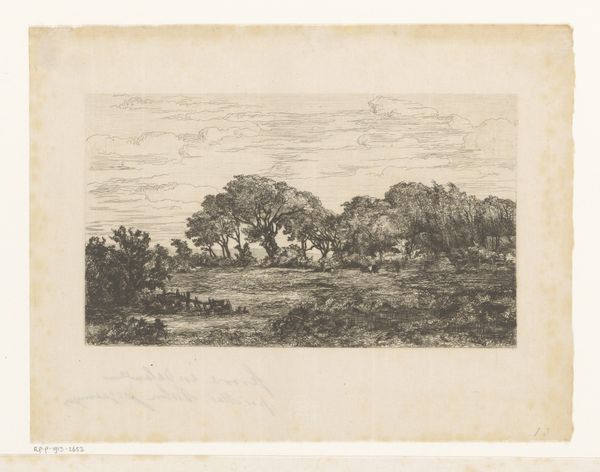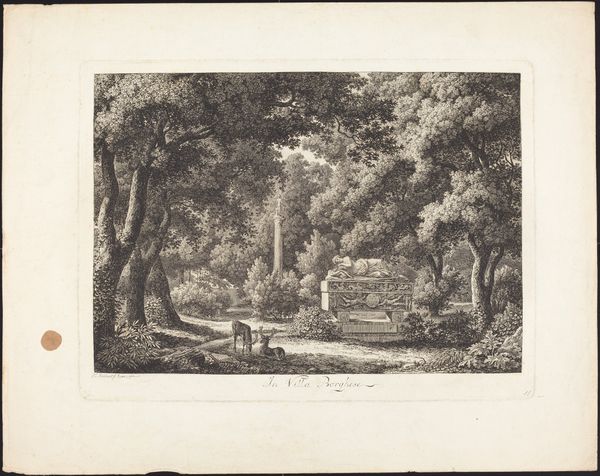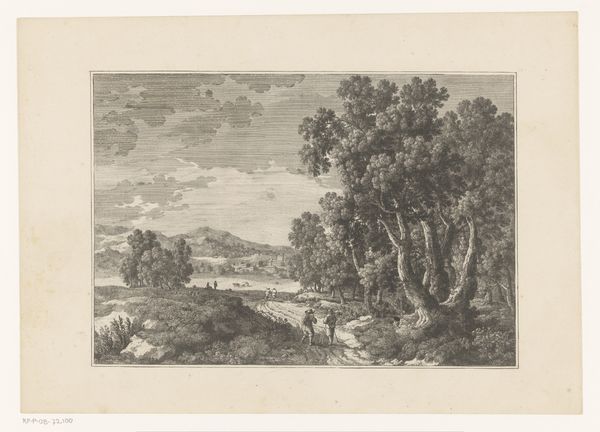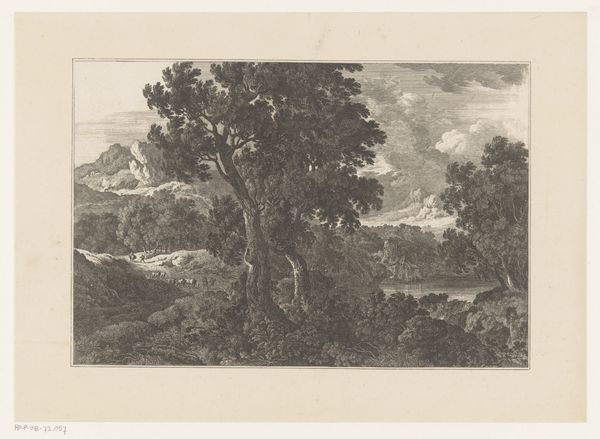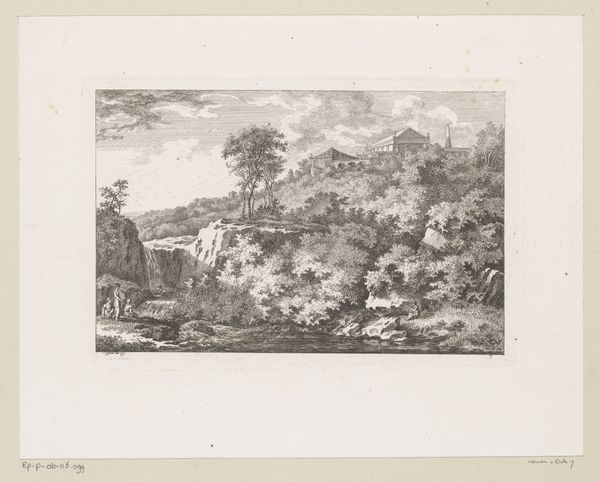
Fontana Blandusia, volgarmente detta Acquoria a Tivoli 1794
0:00
0:00
drawing, print, etching, ink, pen
#
pen and ink
#
drawing
#
ink drawing
#
pen drawing
# print
#
etching
#
landscape
#
ink
#
pen
#
history-painting
#
realism
Dimensions: plate: 28.4 x 37.7 cm (11 3/16 x 14 13/16 in.) sheet: 39.2 x 49.2 cm (15 7/16 x 19 3/8 in.)
Copyright: National Gallery of Art: CC0 1.0
Curator: This etching from 1794 by Jacob Wilhelm Mechau captures a bucolic scene: "Fontana Blandusia, volgarmente detta Acquoria a Tivoli". It’s quite a mouthful, isn't it? What springs to mind when you first see it? Editor: A deceptive stillness. At first glance, it seems peaceful, idyllic. But there's a roughness to the etching, a labor evidenced by all these precise tiny marks... it makes me wonder about the lives depicted. Curator: The setting itself, Acquoria in Tivoli, lends itself to such impressions. The "Fontana Blandusia," refers back to Horace's poetry, evoking classical simplicity… but you’re right. There’s labor depicted at every scale, both in the artwork’s creation, using ink and pen and through the printmaking process, as well as the farming activity on display within the frame. Editor: Exactly! Think about the ink itself, the quality, how consistently it flows, how the artist controls the marks. And those cows! They dominate the foreground – not as romantic emblems, but as beasts of burden, really at the center of this material existence. I imagine the pen-and-ink lines are mirroring the furrows plowed in the fields. Curator: I love how you draw that connection. To me, this is also a sort of idealized realism. Mechau is using line to evoke volume and weight – there's a sensuality to the rendering, an awareness of light, even when constrained by the monochromatic palette. Do you think the "history-painting" tag accurately captures its qualities, though? Editor: "History-painting" seems a bit grand. This is less about epic narratives and more about documenting a way of life connected to the land. Even the act of observation is material. It feels like Mechau understood the physical effort required to make both art and sustenance. The texture created by the etching embodies work. Curator: That's a compelling argument. He definitely draws attention to the practical aspects, doesn't he? There's a humbleness here, a focus on the everyday—a fleeting, intimate look into this place. Editor: And hopefully, the process itself adds layers to our appreciation. Knowing it's an etching, that this scene was painstakingly reproduced... it enriches the image. I now feel a need to examine my consumption, both literally and figuratively. Curator: Wonderful. For me, that deep dive revealed the human connection—a universal thread.
Comments
No comments
Be the first to comment and join the conversation on the ultimate creative platform.
